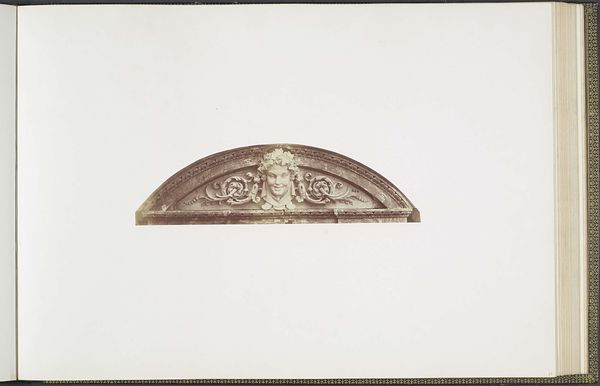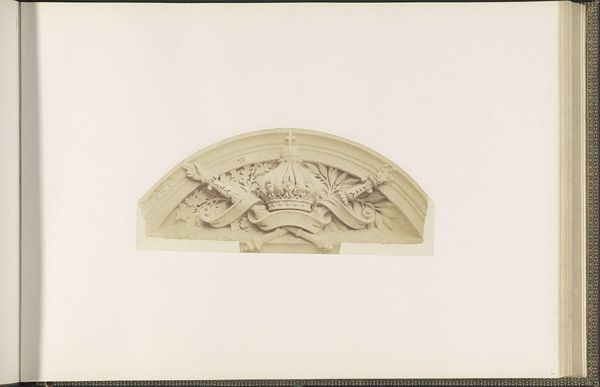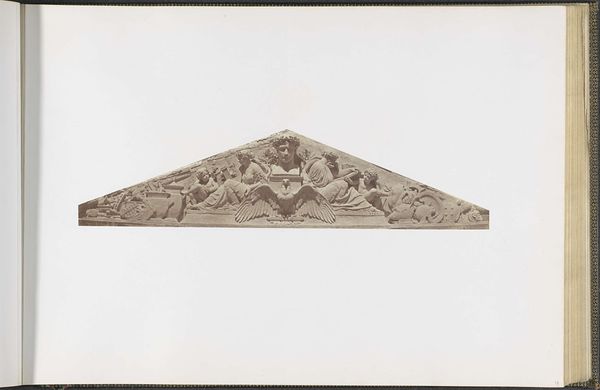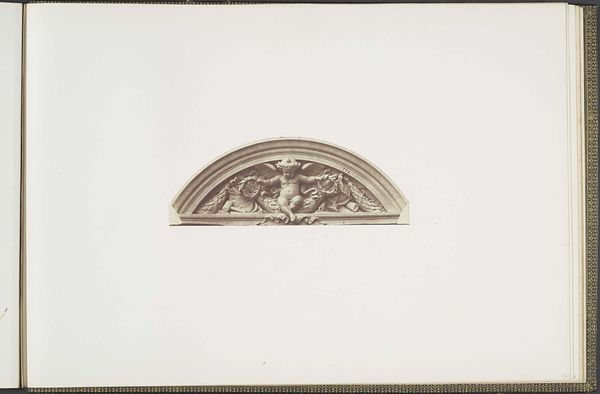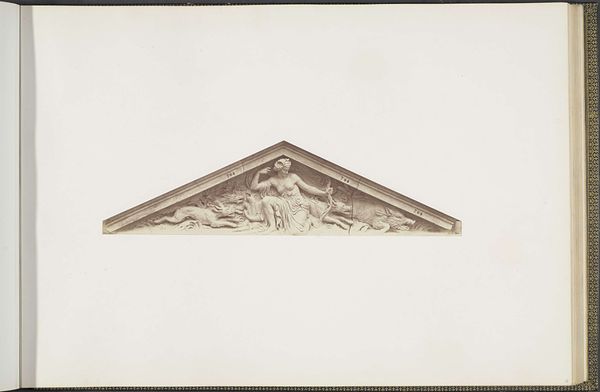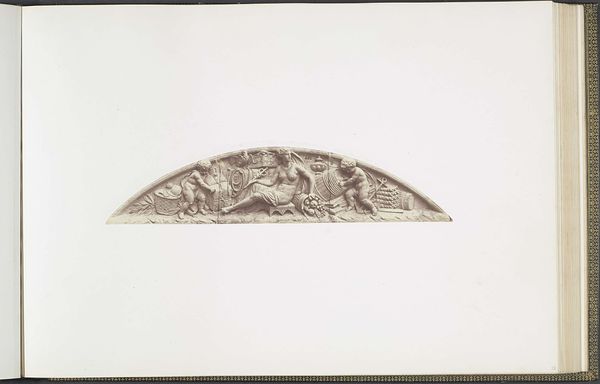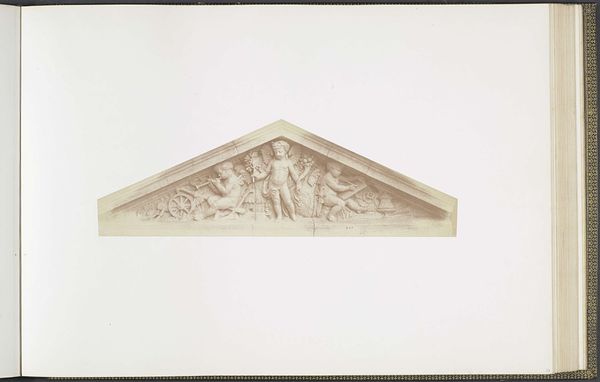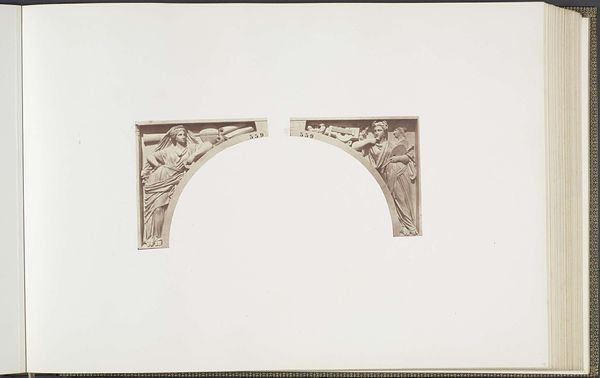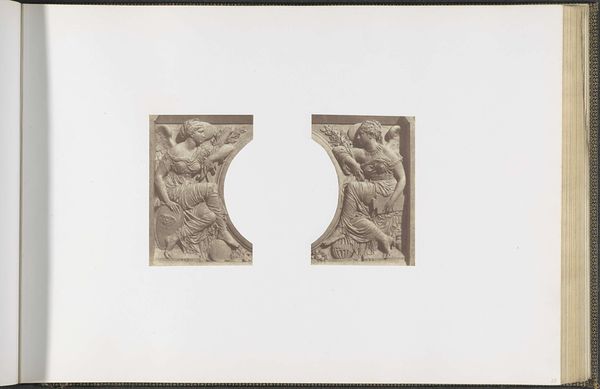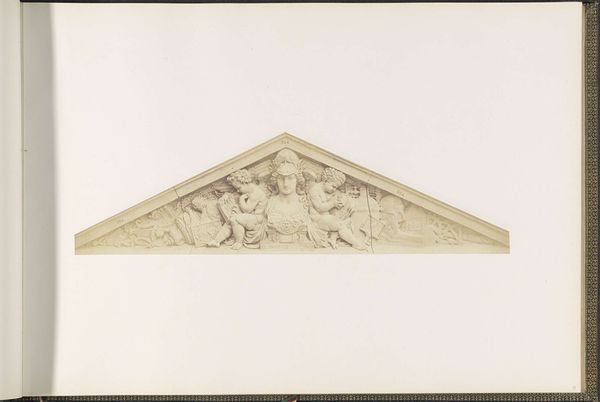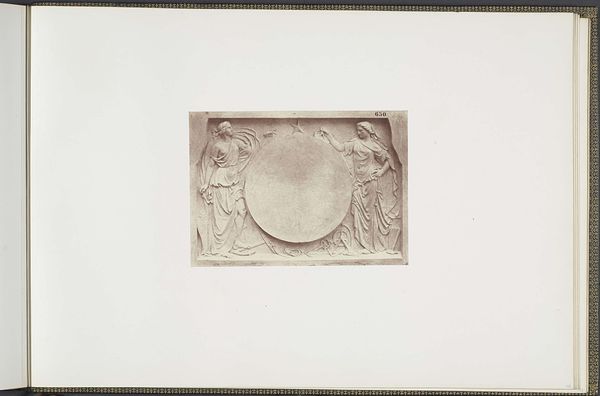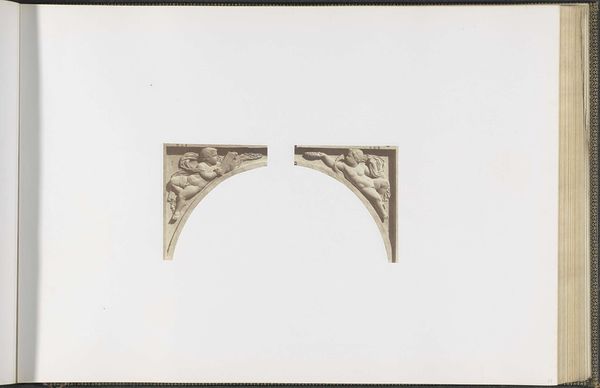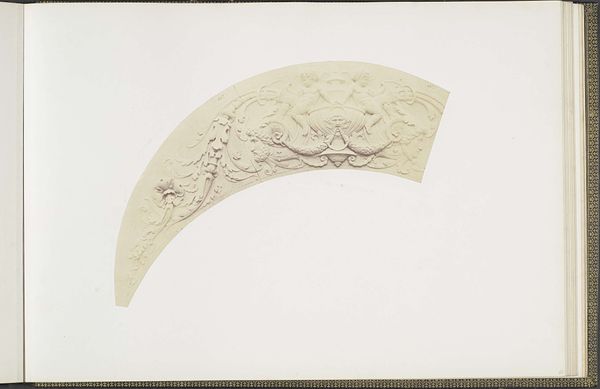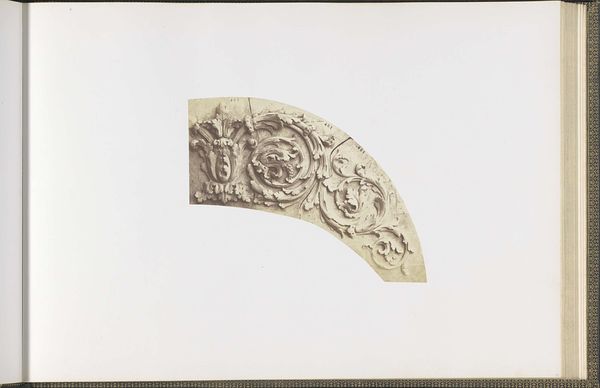
Gipsmodel voor het fronton van twee deuren van het Palais du Louvre door Pierre Edouard Charrier c. 1855 - 1857
0:00
0:00
edouardbaldus
Rijksmuseum
print, relief, photography, sculpture
#
neoclacissism
#
allegory
# print
#
relief
#
classical-realism
#
form
#
photography
#
sculpture
Dimensions: height 376 mm, width 523 mm
Copyright: Rijks Museum: Open Domain
Curator: Well, I’m immediately struck by the elegance, the controlled symmetry. Editor: This photograph captures Pierre Edouard Charrier's plaster model for the pediment above two doors of the Louvre Palace. It’s thought to date from about 1855 to 1857. And indeed, the elegance speaks to the historical moment, don't you think? Curator: The light emphasizes the texture of the plaster; you see every groove and undulation, drawing your eye towards the very refined modeling of the allegorical figures. The details of the cupid, the banner, the decorative carvings of plants; all extremely well-resolved and presented, making it incredibly compelling to observe. Editor: Absolutely, but who are we seeing, really? We see the French monarchy clinging to the artistic language of Neoclassicism as they try to cement the legacy of Napoleon. And we have this… infantile cherub at the heart of it. In some ways it speaks of desperation, to hearken back to a supposed golden era when even the foundations were rotting away under new systems of economy, of governance. Curator: Do you find the form to be simply reactive? Is there no inherent aesthetic value? The curvature, the balance between figure and ground... Editor: Form doesn’t exist in a vacuum, does it? The very classical style chosen communicates volumes about the political atmosphere from which it sprung. Curator: But this tension you describe *creates* the work. The rigidity in style imposed against such change produces the palpable intensity, the very beautiful visual resolution we’re examining now. Editor: I'm more taken by the latent themes. Charrier likely intended an emblem of power, and beauty—a reflection of Imperial ideals. Curator: Of course, and we are given access to something that allows us to discuss the historical and societal meanings we glean, yes. The Neoclassical formality makes it powerful, even now. Editor: So, we arrive, despite our different paths, at an agreement. It’s the friction that charges the beauty, not just the form.
Comments
No comments
Be the first to comment and join the conversation on the ultimate creative platform.
